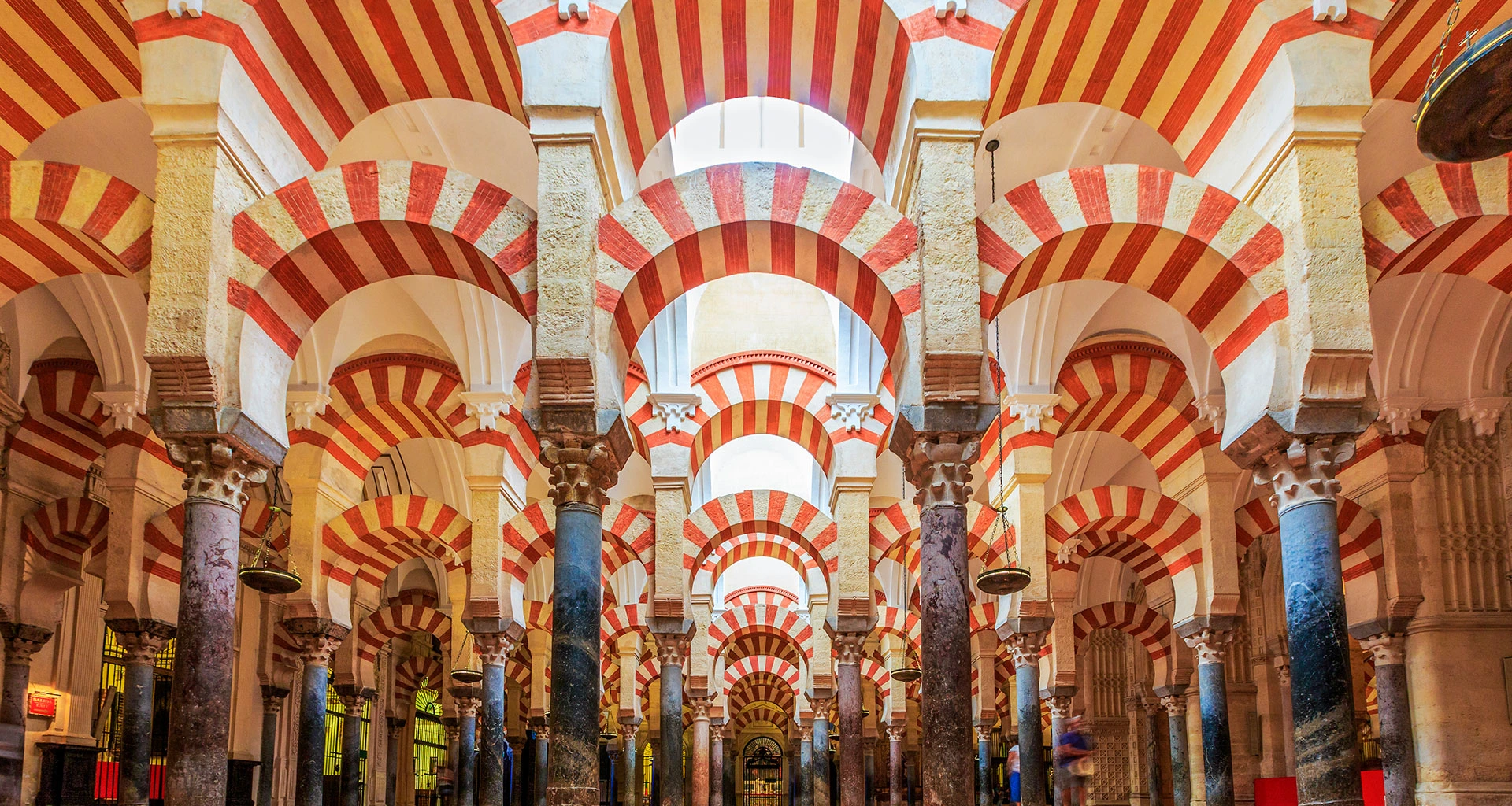
5 reasons to visit the Mosque of Cordoba
If you want to visit one of the most beautiful and unique places in the world, you must come to Córdoba and see its impressive mosque with your own eyes. The Mosque of Córdoba, a symbol of the power of the Umayyad dynasty in the city, has become the emblem of Córdoba and one of the main tourist attractions in Spain.
You will not see anything like it in the world: a blend of cultures and styles fused into one of the most important mosques of its time, later converted into a cathedral. A marvel of the city's past and present, and the purest reflection of the splendor of the Caliphate era in Al-Andalus.
1. In the Mosque, you will discover the splendor of Umayyad Córdoba
The best way to learn about the history of Umayyad Córdoba is by visiting the greatest legacy of that period. The Mosque of Córdoba represents all the magnificence of the Caliphate period in Al-Andalus.
The Umayyad Caliphate was the second of the four caliphates established after the death of Muhammad. The Umayyads were a clan of the Quraysh tribe from Mecca, to which Muhammad belonged. The dynasty was established in the Iberian Peninsula by Abd al-Rahman, the sole survivor of his lineage, who arrived in Ceuta in 755 after the fall of the Umayyad Caliphate of Damascus.
Thirty-one years after his arrival in Al-Andalus, Abd al-Rahman, known as Abd al-Rahman I and the first Umayyad Emir of Córdoba, began the construction of the Mosque of Córdoba. Later, the Mosque would be expanded by his successors, reaching its peak during the subsequent Caliphate.
2. The Mosque was the emblem of the most important city in Europe
During the Caliphate period, Córdoba was the most important city in Europe. The Caliphate of Córdoba was initiated by Abd al-Rahman III, who in 929 challenged the religious authority of rival dynasties and proclaimed himself Caliph, breaking ties with the Caliphate of Baghdad and ushering in a new golden era.
Córdoba became a pilgrimage site for the greatest scientists, philosophers, astronomers, and mathematicians of the time, propelling Al-Andalus to the height of its power. Among them were renowned figures such as Ibn Massarra, Ibn Tufail, Averroes, and Maimonides.
In addition to expanding the Mosque of Córdoba and reconstructing its minaret, Abd al-Rahman III built around 70 libraries in the city. He also founded a university, a medical school, and a school for translating Greek and Hebrew texts into Arabic, preserving many works that were censored by Christianity at the time.
3. The Mosque of Córdoba was the second-largest mosque in the world by area
After multiple expansions carried out by various emirs and caliphs, the Mosque of Córdoba became the second-largest mosque in the world. Covering 23,400 square meters, it was surpassed only by Al-Masjid al-Haram in Mecca and was later overtaken by the Blue Mosque in Istanbul.
It was Caliph Al-Hakam II, successor of Abd al-Rahman III, who undertook the most extensive and beautiful renovation of the Mosque. This expansion began on the second day of his reign, enhancing the prayer hall, improving lighting, constructing new arches, and ultimately giving it the stylistic unity of Caliphal art.
4. The Mosque is a testament to the historical conflict between Arabs and Christians
Al-Andalus is often described as a period when three cultures—Christian, Jewish, and Arab—coexisted. However, throughout the history of Al-Andalus, there were continuous power struggles between Arabs and Christians, culminating in the definitive expulsion of the Arabs from the Iberian Peninsula after the conquest of Granada by the Catholic Monarchs in 1492.
This territorial and ideological conflict left its mark on buildings such as the Mosque. The Mosque of Córdoba was built on the site of an old Christian church, St. Vincent Martyr, which Abd al-Rahman I purchased from the Visigoths.
5. The Mosque of Córdoba is the only mosque-cathedral in the world
Although it is now used exclusively for Christian worship, the official designation of the Mosque of Córdoba as a Mosque-Cathedral makes it unique in the world. The integration of the cathedral within the Mosque creates an astonishing and unparalleled architectural blend.
Its artistic and cultural significance is so great that UNESCO has declared the Mosque and the Historic Center of Córdoba a Cultural Heritage Site and a World Heritage Site.